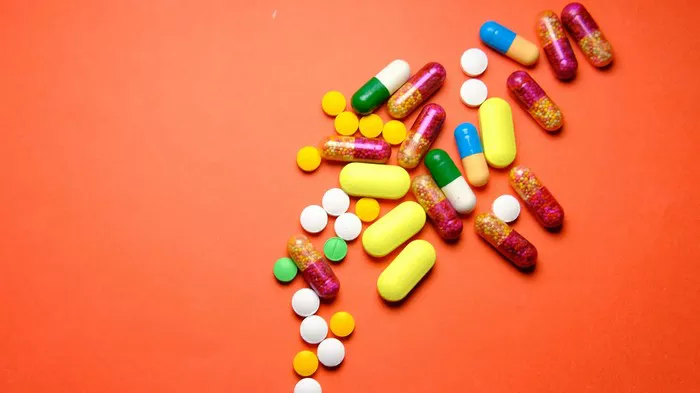Acne is one of the most common skin conditions, affecting people of all ages, particularly teenagers and young adults. It can be more than just a cosmetic concern—it can affect self-esteem and quality of life. Acne is characterized by the appearance of pimples, blackheads, whiteheads, and cysts, often on the face, chest, back, and shoulders. While it is a condition that many people experience during adolescence, acne can persist into adulthood, and for some, it may worsen over time.
Understanding the causes of acne and how it develops is the first step in managing it. The skin is the body’s largest organ and serves as a protective barrier against environmental damage. Acne occurs when hair follicles become clogged with oil, dead skin cells, and bacteria, leading to inflammation and the formation of various types of blemishes. There are many factors that contribute to acne development, including hormonal changes, excess oil production, genetics, and even lifestyle choices.
In this article, we will explore the causes, types, and treatment options for acne. We will also discuss how to manage acne effectively through lifestyle changes, skincare routines, and medical treatments.
What Causes Acne?
Understanding the causes of acne can help you take the necessary steps to manage the condition. Acne is typically caused by a combination of factors that lead to the blockage of hair follicles, which are tiny openings in the skin that allow hair to grow. Each hair follicle is connected to sebaceous glands that produce oil, or sebum, to keep the skin lubricated. When the production of sebum is excessive or when dead skin cells build up, they can combine with bacteria, leading to inflammation and the formation of acne lesions.
Hormonal changes are one of the primary triggers of acne. During puberty, both boys and girls experience an increase in androgens—male hormones that cause the sebaceous glands to enlarge and produce more oil. This surge in oil production can clog the pores, leading to acne. Hormonal fluctuations during menstruation, pregnancy, and the use of birth control can also contribute to acne development. This is why acne can be particularly prevalent among teenagers and women in their reproductive years.
Hormonal Changes
The relationship between hormones and acne is well-documented. During puberty, the body undergoes significant hormonal changes that can lead to the overproduction of sebum. This excess oil can mix with dead skin cells and block hair follicles, creating an ideal environment for acne-causing bacteria. Hormonal fluctuations that occur during menstruation, pregnancy, and the use of birth control can also contribute to acne. Many women experience breakouts before or during their period, which is linked to the hormonal shifts that occur during the menstrual cycle.
In addition to menstruation, conditions such as polycystic ovary syndrome (PCOS) can cause hormonal imbalances that trigger acne. When androgen levels are too high, the sebaceous glands produce more oil, leading to clogged pores and, ultimately, acne. Understanding these hormonal links is crucial in treating acne, especially for women who may experience flare-ups due to hormonal fluctuations.
Genetics
Another key factor in the development of acne is genetics. If your parents or siblings had acne, you are more likely to develop it yourself. Genetic factors determine how sensitive your skin is to hormonal changes, how much oil your skin produces, and how your immune system responds to bacteria and inflammation. If you have a family history of acne, you may inherit a tendency for oilier skin or more reactive sebaceous glands, both of which can contribute to acne formation.
Genetics also influence how severe your acne may become. Some people may experience mild breakouts while others may develop cystic acne. While you cannot change your genetic predisposition, understanding your family history can help you identify whether you are at risk for more severe acne and seek early treatment if necessary.
Types of Acne
Acne manifests in several different forms, ranging from mild blemishes to severe cystic breakouts. The types of acne vary in severity, and the treatment plan may differ depending on the type and extent of the condition.
Blackheads and Whiteheads
Blackheads and whiteheads are the most common forms of acne. Both types are caused by clogged pores, but they differ in appearance. Blackheads are open comedones, which means that the pore is clogged with a mixture of oil and dead skin cells that oxidize when exposed to air, giving them a black appearance. Whiteheads, on the other hand, are closed comedones, meaning the pore is clogged but remains covered by skin, resulting in a small, white bump.
Blackheads tend to be more visible and easier to treat compared to whiteheads. They often appear on the nose and forehead, where the skin tends to be oilier. Whiteheads, however, may appear as small bumps on the skin and can be more challenging to remove since the pore is closed. Both blackheads and whiteheads can be treated with over-the-counter products like salicylic acid or benzoyl peroxide.
Papules and Pustules
Papules and pustules are inflamed acne lesions. Papules are small, raised bumps on the skin that are often red and tender to the touch. Pustules are similar but are filled with pus, making them more noticeable. Both types of acne are caused by inflammation and can be painful. These types of acne are more severe than blackheads and whiteheads and may require medical treatment.
Papules can be the result of the body’s immune response to clogged pores, which become inflamed. Pustules develop when the clogged pore becomes infected, and pus forms inside. Both papules and pustules may take longer to heal and may leave scars if not treated properly. Prescription medications, such as topical antibiotics or retinoids, may be necessary for managing these types of acne.
Cystic Acne
Cystic acne is the most severe form of acne and involves large, painful, cyst-like lesions that are filled with pus. Cystic acne occurs when the pores become deeply infected and inflamed. This type of acne is often genetic and can result in scarring if not treated promptly. It is typically resistant to over-the-counter treatments and may require prescription medications.
Cystic acne can cause significant physical and emotional distress due to its size and pain. It is usually found on the face, neck, chest, and back. Since cystic acne involves deep skin layers, it is less likely to be cleared up by topical treatments alone. In many cases, oral medications such as antibiotics or isotretinoin (commonly known as Accutane) are used to treat cystic acne and prevent scarring.
Treatment Options for Acne
While acne can be frustrating, there are many treatment options available to help manage and reduce its symptoms. From over-the-counter products to prescription medications, there is a wide range of treatments to suit different skin types and severities of acne.
Over-the-Counter Treatments
For mild to moderate acne, over-the-counter treatments may be sufficient. These products typically contain active ingredients such as benzoyl peroxide, salicylic acid, or alpha-hydroxy acids (AHAs), all of which can help clear up acne and prevent future breakouts.
Benzoyl Peroxide
Benzoyl peroxide is one of the most common and effective acne treatments. It works by killing the bacteria that cause acne and helping to prevent new pimples from forming. Benzoyl peroxide is available in various strengths, ranging from 2.5% to 10%. It can be found in cleansers, gels, creams, and spot treatments. However, benzoyl peroxide can cause dryness and irritation, so it is important to use it as directed and moisturize the skin afterward.
In addition to killing acne-causing bacteria, benzoyl peroxide helps reduce inflammation and promote the healing of existing acne. Many people find that benzoyl peroxide is most effective when used as part of a comprehensive skincare routine, along with gentle cleansing and moisturizing.
Salicylic Acid
Salicylic acid is a beta-hydroxy acid (BHA) that works by exfoliating the skin and unclogging pores. It helps remove dead skin cells that can contribute to acne formation and also has anti-inflammatory properties. Salicylic acid is often found in cleansers, toners, and spot treatments. It is particularly effective for treating blackheads and whiteheads by breaking down the debris that blocks pores.
While salicylic acid is gentle on the skin, it may cause dryness or peeling, especially in people with sensitive skin. It is important to use salicylic acid products sparingly and combine them with moisturizing products to maintain skin hydration.
Prescription Medications
For moderate to severe acne, a dermatologist may prescribe stronger medications. These may include oral antibiotics, topical retinoids, or hormonal treatments.
Oral Antibiotics
Oral antibiotics, such as tetracycline, doxycycline, and minocycline, are commonly prescribed for moderate to severe acne. They work by reducing the bacteria that contribute to acne and reducing inflammation in the skin. However, they are typically used for short periods due to potential side effects such as antibiotic resistance.
Oral antibiotics can be highly effective for controlling acne, especially when combined with topical treatments. However, they are not a long-term solution and are often used in conjunction with other medications or therapies.
Topical Retinoids
Topical retinoids, such as tretinoin, adapalene, and tazarotene, are derived from vitamin A and help to unclog pores and reduce inflammation. Retinoids are highly effective for treating both acne and acne scars, but they can cause dryness and irritation, so they are often used in combination with other acne treatments.
Retinoids work by increasing skin cell turnover, preventing clogged pores, and promoting the healing of acne lesions. They are often considered the gold standard in acne treatment and are recommended for those with persistent acne that does not respond to other treatments.
Prevention and
Lifestyle Changes
While acne treatment is essential, lifestyle changes can also play a role in managing the condition. Good skincare habits, a balanced diet, and stress management techniques can help prevent acne flare-ups and improve skin health overall.
Skincare Routine
Establishing a consistent skincare routine is crucial for acne management. This should include cleansing the skin gently twice a day with a mild, non-comedogenic cleanser, followed by the application of acne treatments such as benzoyl peroxide or salicylic acid. Moisturizing is equally important to keep the skin hydrated and prevent excessive dryness, which can worsen acne.
Avoid touching or picking at acne lesions, as this can introduce bacteria and lead to scarring. It is also important to avoid harsh scrubbing or over-cleansing the skin, as this can irritate the skin and trigger more breakouts.
Diet and Hydration
A balanced diet rich in vitamins, minerals, and antioxidants can support healthy skin. Avoiding excessive consumption of processed foods, sugary snacks, and dairy products may help reduce inflammation and breakouts for some individuals. Drinking plenty of water helps to keep the skin hydrated and flushes out toxins, supporting overall skin health.
Stress Management
Stress is known to exacerbate acne by triggering hormonal changes that increase oil production in the skin. Practicing stress-relieving activities such as yoga, meditation, or regular physical activity can help manage stress levels and improve skin health.
Conclusion
Acne is a common and frustrating skin condition, but with the right understanding, treatment, and lifestyle changes, it can be effectively managed. Whether you’re dealing with mild breakouts or severe cystic acne, there are plenty of treatment options available to help clear your skin and restore your confidence. If over-the-counter treatments aren’t enough, consulting a dermatologist can help you find a more tailored approach to managing your acne. With patience and the right care, acne can be a condition that is manageable and treatable.
Related Topics
































